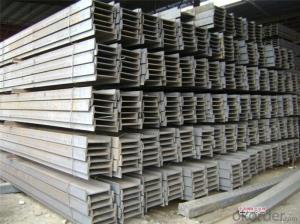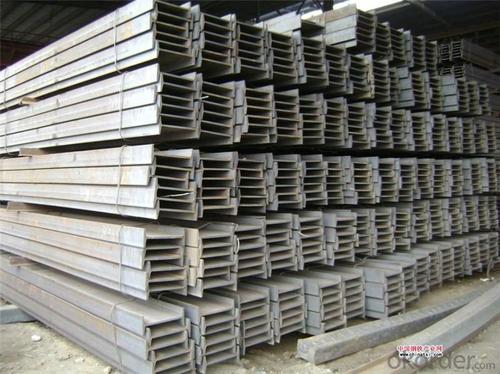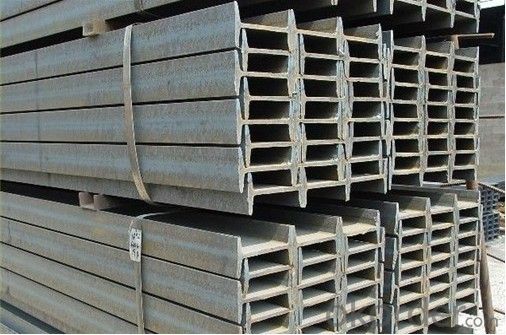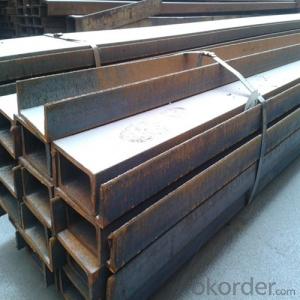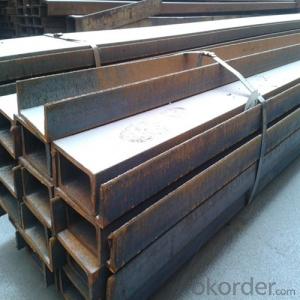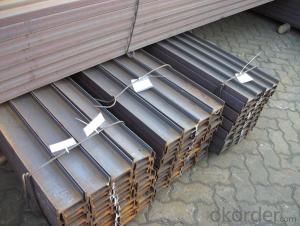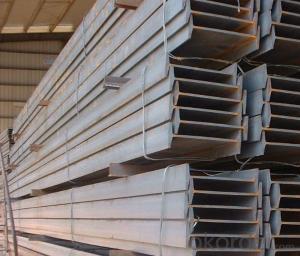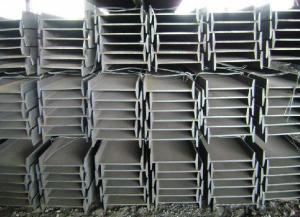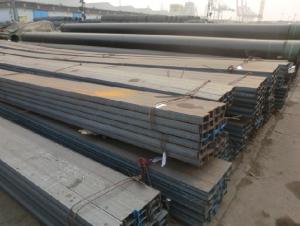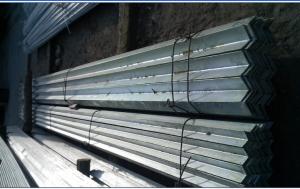Hot Rolled IPE and IPEAA Beam with Q235B Grade
- Loading Port:
- Tianjin
- Payment Terms:
- TT OR LC
- Min Order Qty:
- 25 m.t.
- Supply Capability:
- 10000 m.t./month
OKorder Service Pledge
OKorder Financial Service
You Might Also Like
Product Description:
OKorder is offering high quality Hot Rolled Steel I-Beams at great prices with worldwide shipping. Our supplier is a world-class manufacturer of steel, with our products utilized the world over. OKorder annually supplies products to European, North American and Asian markets. We provide quotations within 24 hours of receiving an inquiry and guarantee competitive prices.
Product Applications:
Hot Rolled Steel I-Beams are ideal for structural applications and are widely used in the construction of buildings and bridges, and the manufacturing, petrochemical, and transportation industries.
Product Advantages:
OKorder's Steel I-Beams are durable, strong, and resist corrosion.
Main Product Features:
· Premium quality
· Prompt delivery & seaworthy packing (30 days after receiving deposit)
· Corrosion resistance
· Can be recycled and reused
· Mill test certification
· Professional Service
· Competitive pricing
Product Specifications:
Manufacture: Hot rolled
Grade: Q195 – 235
Certificates: ISO, SGS, BV, CIQ
Length: 6m – 12m, as per customer request
Packaging: Export packing, nude packing, bundled
Chinese Standard (H*W*T) | Weight (Kg/m) | 6m (pcs/ton) | Light I (H*W*T) | Weight (Kg/m) | 6m (pcs/ton) | Light II (H*W*T) | Weight (Kg/m) | 6M |
100*68*4.5 | 11.261 | 14.8 | 100*66*4.3 | 10.13 | 16.4 | 100*64*4 | 8.45 | 19.7 |
120*74*5.0 | 13.987 | 11.9 | 120*72*4.8 | 12.59 | 13.2 | 120*70*4.5 | 10.49 | 15.8 |
140*80*5.5 | 16.89 | 9.8 | 140*78*5.3 | 15.2 | 10.9 | 140*76*5 | 12.67 | 13.1 |
160*88*6 | 20.513 | 8.1 | 160*86*5.8 | 18.46 | 9 | 160*84*5.5 | 15.38 | 10.8 |
180*94*6.5 | 24.143 | 6.9 | 180*92*6.3 | 21.73 | 7.6 | 180*90*6 | 18.11 | 9.2 |
200*100*7 | 27.929 | 5.9 | 200*98*6.8 | 25.14 | 6.6 | 200*96*6.5 | 20.95 | 7.9 |
220*110*7.5 | 33.07 | 5 | 220*108*7.3 | 29.76 | 5.6 | 220*106*7 | 24.8 | 6.7 |
250*116*8 | 38.105 | 4.3 | 250*114*7.8 | 34.29 | 4.8 | 250*112*7.5 | 28.58 | 5.8 |
280*122*8.5 | 43.492 | 3.8 | 280*120*8.2 | 39.14 | 4.2 | 280*120*8 | 36.97 | 4.5 |
300*126*9 | 48.084 | 3.4 | 300*124*9.2 | 43.28 | 3.8 | 300*124*8.5 | 40.87 | 4 |
320*130*9.5 | 52.717 | 3.1 | 320*127*9.2 | 48.5 | 3.4 | |||
360*136*10 | 60.037 | 2.7 | 360*132*9.5 | 55.23 | 3 |
FAQ:
Q1: Why buy Materials & Equipment from OKorder.com?
A1: All products offered byOKorder.com are carefully selected from China's most reliable manufacturing enterprises. Through its ISO certifications, OKorder.com adheres to the highest standards and a commitment to supply chain safety and customer satisfaction.
Q2: What makes stainless steel stainless?
A2: Stainless steel must contain at least 10.5 % chromium. It is this element that reacts with the oxygen in the air to form a complex chrome-oxide surface layer that is invisible but strong enough to prevent further oxygen from "staining" (rusting) the surface. Higher levels of chromium and the addition of other alloying elements such as nickel and molybdenum enhance this surface layer and improve the corrosion resistance of the stainless material.
Q3: Can stainless steel rust?
A3: Stainless does not "rust" as you think of regular steel rusting with a red oxide on the surface that flakes off. If you see red rust it is probably due to some iron particles that have contaminated the surface of the stainless steel and it is these iron particles that are rusting. Look at the source of the rusting and see if you can remove it from the surface.
Images:
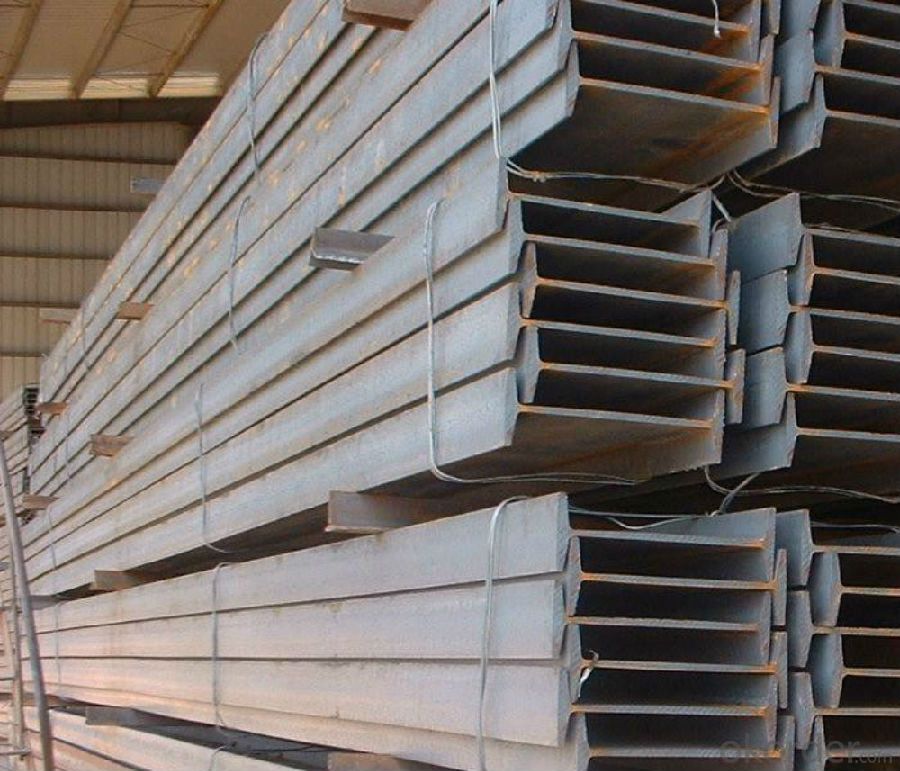

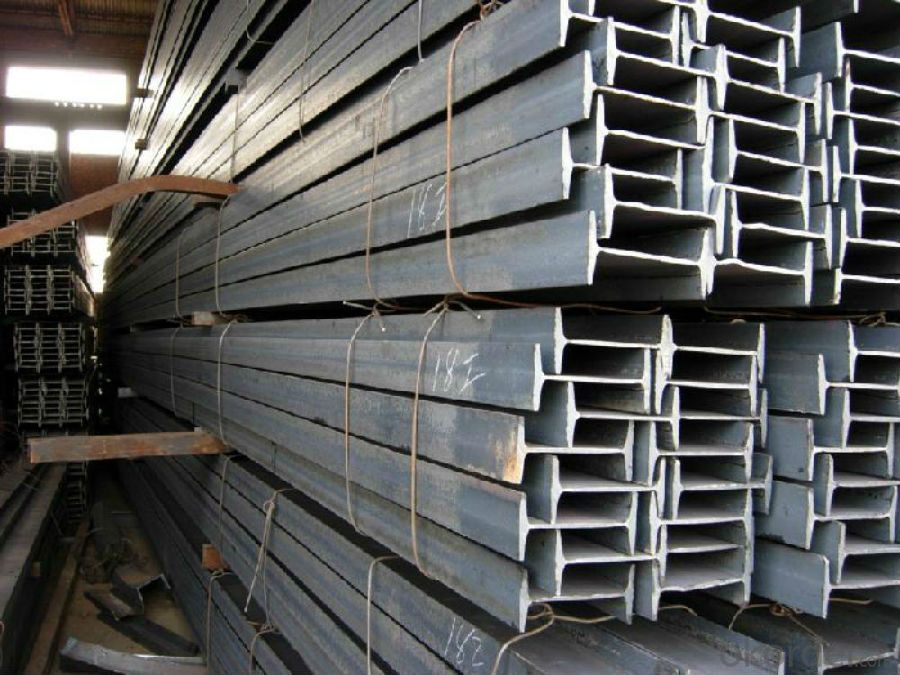
- Q: Is the I-beam generally made or is it a long one?
- I-beam has custom-made, there are also ready-made, the general length of 5~19 meters.
- Q: Are steel I-beams suitable for supporting rooftop HVAC units?
- Yes, steel I-beams are suitable for supporting rooftop HVAC units. Steel I-beams are known for their strength and load-bearing capabilities, making them an ideal choice for supporting heavy equipment like rooftop HVAC units. They provide excellent structural support and can withstand the weight and vibrations associated with HVAC units. Additionally, steel I-beams are durable, resistant to corrosion, and can withstand harsh weather conditions, making them a reliable option for long-term support.
- Q: How do steel I-beams contribute to the overall aesthetics of a building?
- Not only are steel I-beams renowned for their structural strength and support, but they also make a significant contribution to the overall aesthetics of a building. These beams possess a sleek and contemporary look that can bring a touch of sophistication and elegance to any architectural design. One manner in which steel I-beams enhance a building's aesthetics is through their clean and minimalist appearance. Their slender profile and straight lines create a sense of simplicity and efficiency, which can be particularly appealing in contemporary and industrial-style buildings. Furthermore, their sleek look allows for a more open and spacious interior, as they can span long distances without requiring additional support columns. Additionally, steel I-beams can be used creatively as architectural elements in exposed structural systems. By leaving the beams visible instead of concealing them behind walls or ceilings, they become a focal point and add a unique visual interest to the space. The raw and industrial aesthetic of steel I-beams can complement various design styles, ranging from modern and minimalist to rustic and industrial. The use of steel I-beams also provides flexibility in architectural design. They can be fabricated into different shapes and sizes, enabling architects to create intricate and innovative designs. Whether utilized as load-bearing elements, decorative accents, or as part of an open floor plan concept, steel I-beams offer versatility and adaptability to architectural projects. Furthermore, steel I-beams contribute to the overall sustainability of a building. Steel is an exceptionally sustainable material as it can be recycled endlessly without losing its properties. By incorporating steel I-beams into the design, a building can demonstrate its commitment to sustainable construction practices. In conclusion, steel I-beams have a vital role in enhancing the overall aesthetics of a building by imparting a modern, minimalist, and industrial touch. Their clean lines, sleek appearance, and versatility enable the creation of innovative architectural designs, while their sustainability further enhances the appeal of the building.
- Q: How do steel I-beams contribute to sustainability in construction?
- Steel I-beams contribute to sustainability in construction in several ways. Firstly, steel is a highly durable material with a long lifespan, meaning that structures built with steel I-beams have a reduced need for maintenance and replacement over time. This reduces waste and the consumption of resources. Additionally, steel is a recyclable material, allowing for the reuse and repurposing of I-beams at the end of their lifecycle. This reduces the demand for new steel production and helps to conserve natural resources. Moreover, steel I-beams are lightweight yet strong, allowing for efficient construction processes and the use of fewer materials overall. Lastly, steel is resistant to fire, pests, and weathering, which enhances the longevity and resilience of structures, further supporting sustainability in construction.
- Q: What are the standard lengths of steel I-beams?
- The standard lengths of steel I-beams vary depending on the specific type and manufacturer. However, common lengths range from 20 feet to 60 feet, with increments of 10 feet.
- Q: Is H steel welded or rolled? What's the difference between steel and I-beam?
- Roll forming. But not once, but hot rolling dozens of times in order to finally reach the specified specifications.
- Q: Are steel I-beams suitable for load-bearing walls?
- No, steel I-beams are not suitable for load-bearing walls. Steel I-beams are typically used in construction for structural support, such as for beams and columns. They are not designed or intended to be used as load-bearing walls. Load-bearing walls are typically made of materials such as concrete, brick, or wood, which have the necessary strength and stability to support the weight and forces placed upon them. Using steel I-beams for load-bearing walls would not provide the necessary structural integrity and could lead to instability and safety issues. It is important to consult with a structural engineer or architect to determine the appropriate materials and construction methods for load-bearing walls.
- Q: How is I-beam connected?
- Put a splint on the left and right sides of the steel belly of the I-beam, drill out the equal hole in the splint and the steel belly, and fix with the high strength bolt. After that, the flange plate of the I-beam will be welded by welding. Generally, the holes are arranged vertically, and three sides can be used. The diameter depends on the height of the i-beam.
- Q: What kind of low carbon steel or medium carbon steel are they?
- Low carbon steel (low carbon steel) as the carbon content of less than 0.25% of the carbon steel, because of its low strength, low hardness and soft, it is also called the mild steel. It includes most of the ordinary carbon structural steel and some high-quality carbon structural steel, most of which are not used for engineering structural parts without heat treatment. Some of them are used for wear-resistant mechanical parts after carburizing and other heat treatment.
- Q: Can Steel I-Beams be used for food processing facilities?
- Yes, steel I-beams can be used for food processing facilities. Steel is a durable and strong material that can support heavy loads, making it suitable for constructing the structural framework of food processing facilities. Additionally, steel is resistant to corrosion, which is important in maintaining hygienic conditions required in such facilities.
Send your message to us
Hot Rolled IPE and IPEAA Beam with Q235B Grade
- Loading Port:
- Tianjin
- Payment Terms:
- TT OR LC
- Min Order Qty:
- 25 m.t.
- Supply Capability:
- 10000 m.t./month
OKorder Service Pledge
OKorder Financial Service
Similar products
Hot products
Hot Searches
Related keywords
